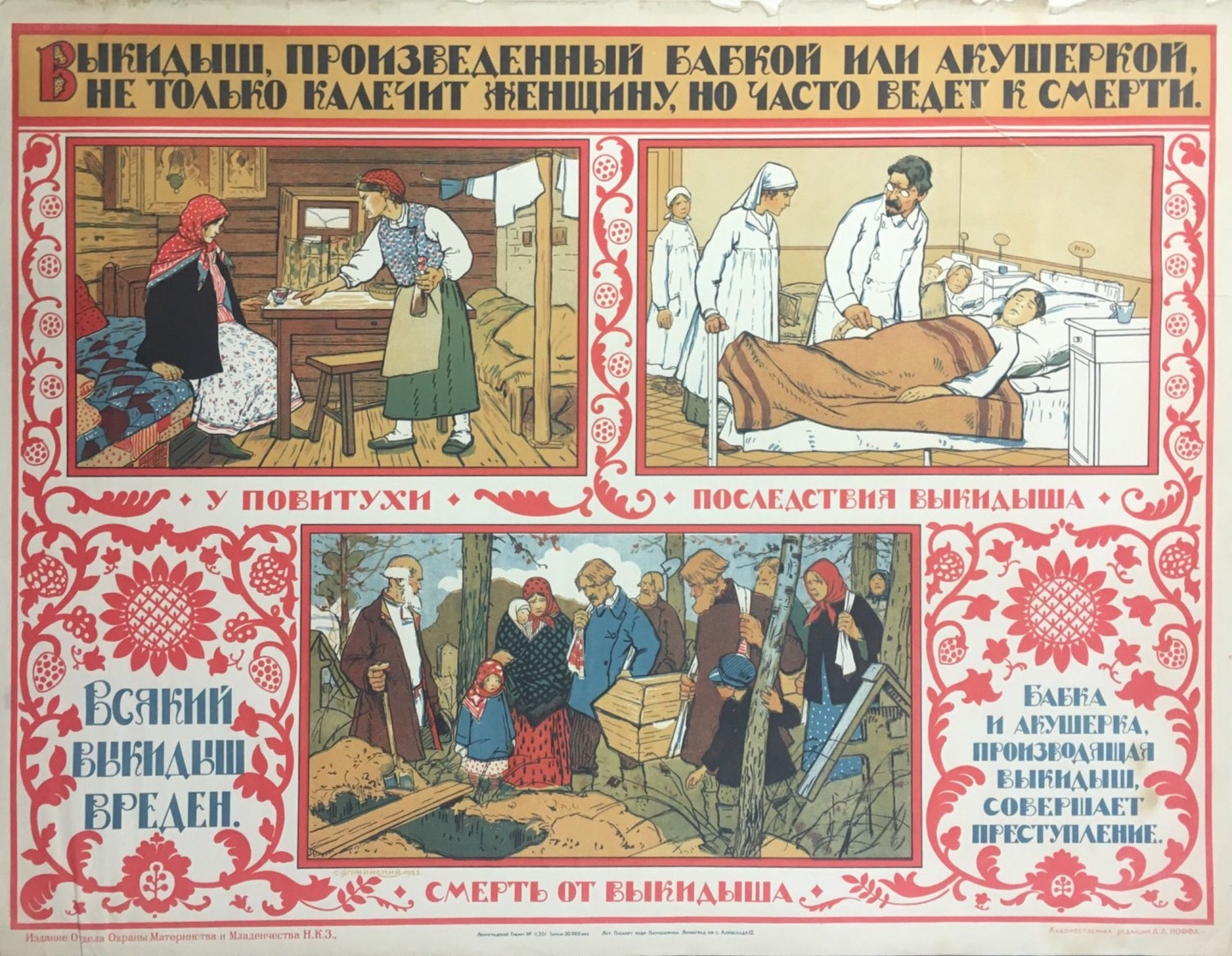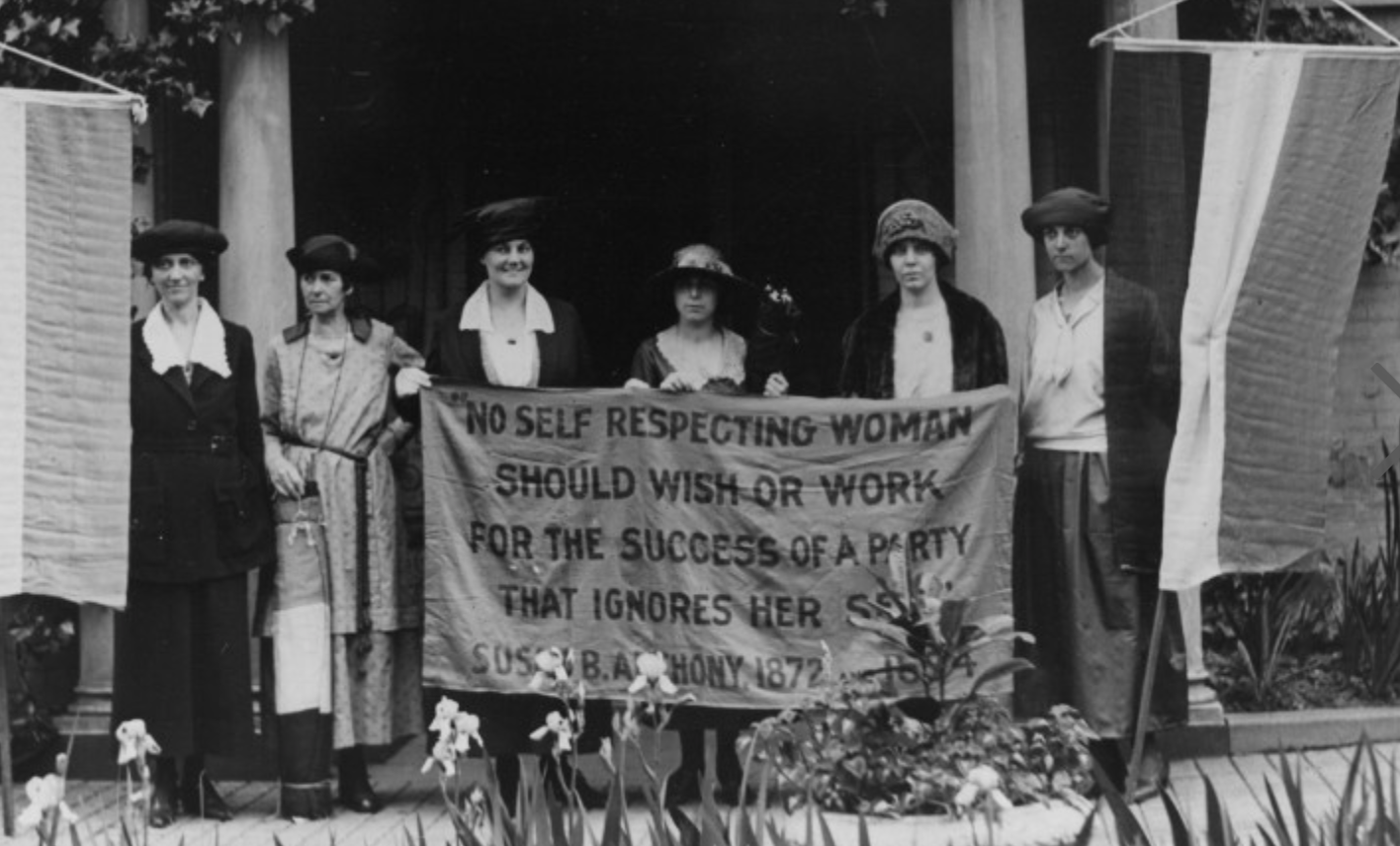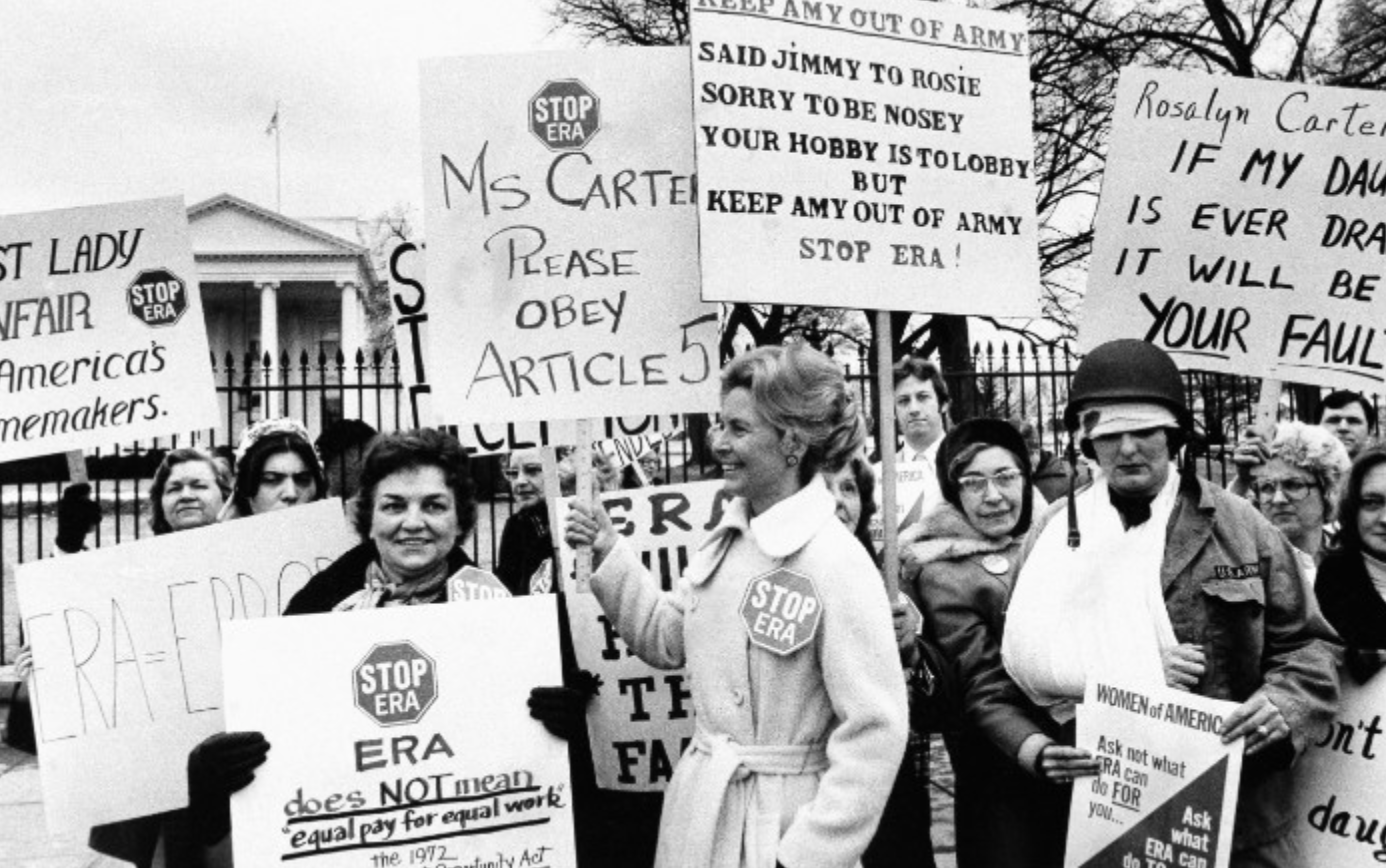Before Legalization
Before abortion was legalized in 1973, women were forced to resort to unsafe methods of terminating a pregnancy, often resorting to wire coat hangers, throwing themselves down stairs, or drinking cleaning products. However, the procedures would often be damaging because of the nature of the male doctors, not entirely because of the physical aspect of the procedure. Not only could these "back alley" abortions cause phsyical harm to the woman, but it would also cause psychological harm that could stay with her for a lifetime.
"It wasn’t a coat hanger. It was with a physician who wasn’t a hack. … Most damaging to me, psychologically, was that I felt as though I was damaged goods.”
-Leta Dalley recalls her abortion experience prior to legalization

Russian poster condemns American abortion procedures. Directly translates to, "Abortions induced by grandma or self-taught midwives not only maim the woman, they also often lead to death"


